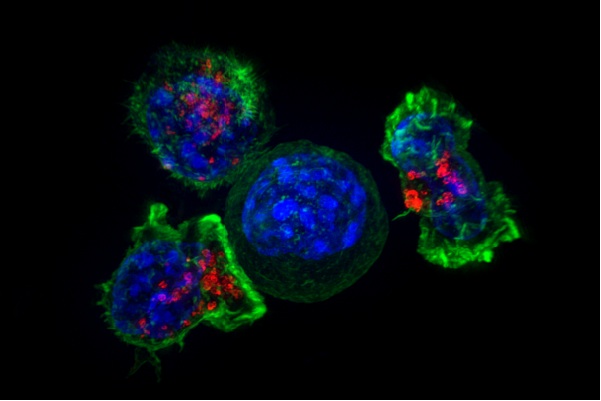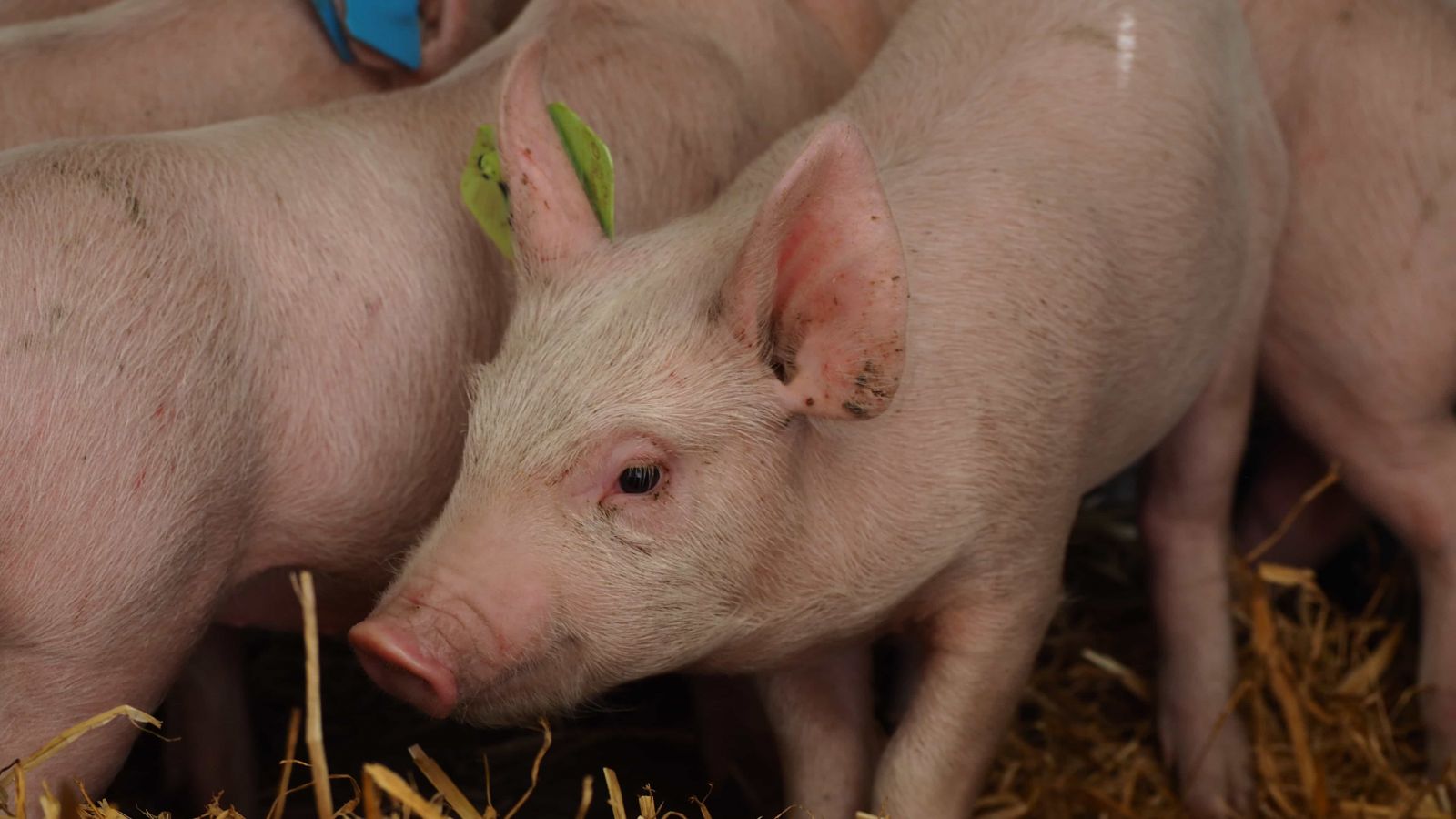T cells can provide protection against multiple strains of flu and other disease, but current vaccines are unable to activate them effectively. The tools developed in this study were successfully used to show that aerosol delivery of a candidate influenza vaccine is highly efficient in triggering T cell responses in the pig lung, which are essential for protection against respiratory diseases.

Superresolution image of a group of killer T cells (green and red) surrounding a cancer cell (blue, centre),
https://commons.wikimedia.org/wiki/Category:Cytotoxic_T_cells
Mick Bailey, Professor of Comparative Immunology in Veterinary Pathology and Infection and Immunity at the Bristol Veterinary School led the group that provided the monoclonal antibodies used to characterise the Babraham pig* T-cells.
Using these new antibodies allows the scientist to see how immune cells in pigs, called CD8 (killer) T cells, are recruited in large numbers in the lung after infection with influenza or aerosol vaccination. The tools can also be used to identify virus proteins that are recognised by the immune system, offering the potential to design more effective vaccines. The same methods can be applied to other important pig diseases such as foot-and-mouth disease and African swine fever.
The breakthrough research, described in PLOS Pathogens, used a unique line of Babraham inbred pigs and brings methods for studying these vital immune cells up to the same high standards that are available for humans and mice.
Dr Elma Tchilian, head of the Mucosal Immunology group at Pirbright said:
“This study will equip us to track T cells during infection and understand how best to vaccinate animals and humans to achieve powerful protective immune responses. Our tools fill a gap which previously hindered swine immunology research, and can now be used in the study of many diseases.”
Professor Andrew Sewell, lead author of the study said:
“Pigs provide a very good model system for influenza virus infection. They can be infected with both human and bird flu in addition to swine flu and are known to act as important ‘mixing vessels’ for the creation of pandemic flu strains. The new tools we’ve developed in Cardiff will allow researchers at Pirbright, the Bristol Veterinary School and elsewhere to closely study pig T cell responses to influenza for the first time. The ultimate goal will be to create a vaccine that can be effective against all strains of flu in pigs, birds and humans.”
Alain Townsend, Professor of Molecular Immunology at the Weatherall Institute Oxford University said:
“The new techniques developed by Andy Sewell and his colleagues showed that our vaccine candidate called S-FLU induced a strong T cell response in the lung of the Babraham pig after aerosol delivery. This is a very helpful extension to the equivalent results we obtained in mice, and provides a unique opportunity for defining the protective role of these cells in a large animal that may model human disease more faithfully.”

*The Babraham pig is an inbred strain and is the only example of a large inbred pig breed, which are more closely related physiologically to commercial pigs and indeed humans than other miniature pig models. As a consequence they have great potential to play an important role in studying infectious diseases in pigs, and as a preclinical model for human disease.
The facilities at Pirbright can be seen in this 360 tour: http://www.labanimaltour.org/pirbright
Within this tour is an interview with Dr Elma Tchilian talking about Swine Influenza virus.
You can also watch a clip about a vaccine trial on pigs from inside a category 3 containment facility.
Last edited: 8 March 2022 09:45



